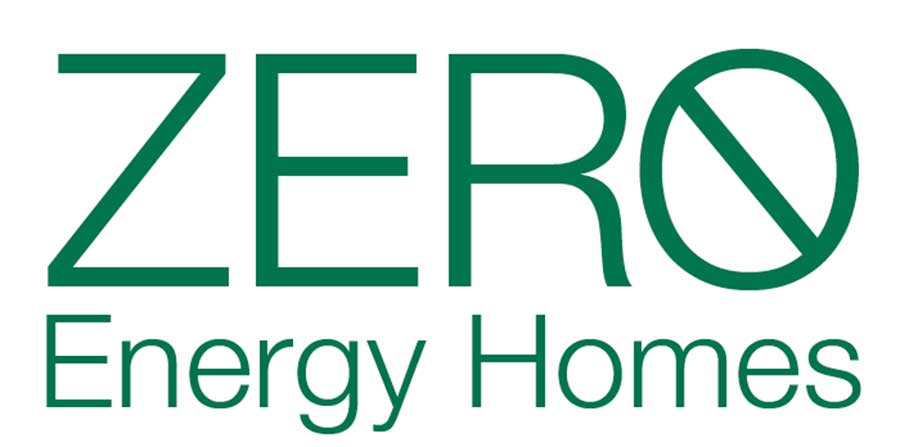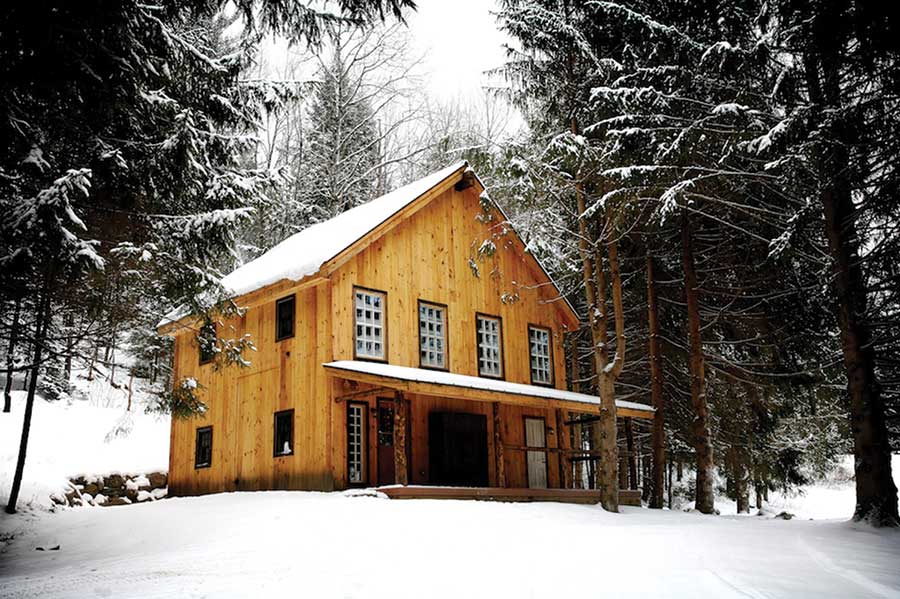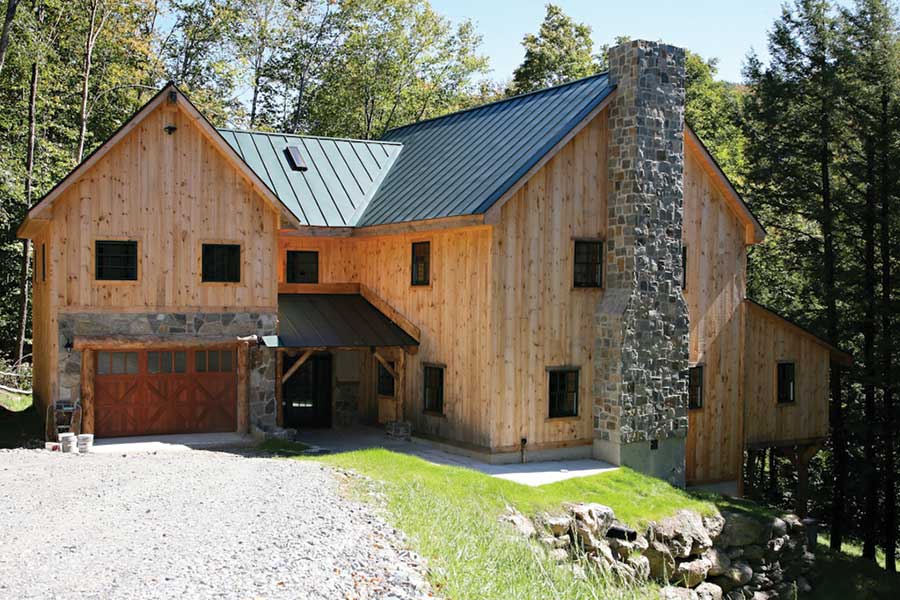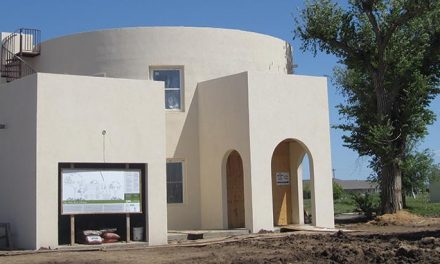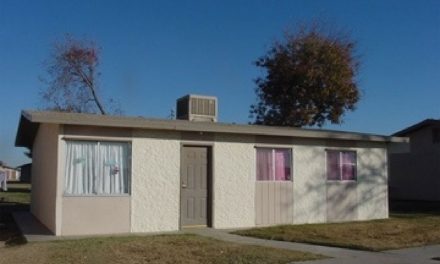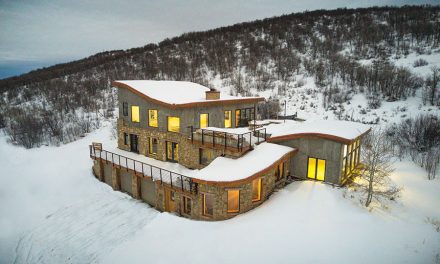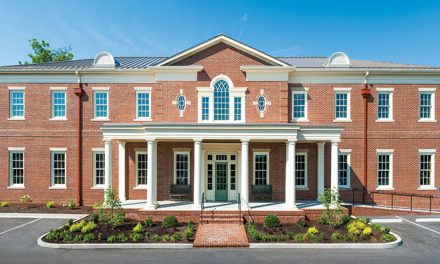Imagine a home that is not only efficient, but also produces enough energy to meet all of its electrical, heating and
cooling needs. Yes, buildings like this really exist. They’re called Zero Energy Homes, and they’ve been built all across North America.
Not surprisingly, many of these homes have exterior walls built from insulating concrete forms (ICFs).
“When doing a zero energy design, the first priority is energy efficiency, and the most important factor in determining efficiency is a thermally sound, energy-efficient building envelope,” says Jordan Goldman, a mechanical engineer at Independence Energy Homes, which specializes in the design of net-zero homes.
“Obviously, ICFs do a great job of that because there’s an unbroken layer of thermal insulation, and with a solid core of concrete, there’s no air infiltration. So you get this great thermal performance which reduces the energy needs of the building tremendously.”
Unlike the early attempts of the 1970’s, today’s zero energy home (ZEH) doesn’t have to look odd. “One thing we always tell our clients is that a zero energy home doesn’t need to have particular shape or look,” Goldman says. “We can work with your preferences and tastes.”
A ZEH combines state-of-the-art, energy-efficient construction techniques with renewable energy systems (usually solar and wind power) to create as much energy as it uses on an annual basis. Because solar and wind power are unpredictable, most ZEH’s are connected to the local electrical grid. When the home can’t produce enough power to meet its needs—at night or on a cloudy winter day, for instance—the homeowner purchases energy from the utility provider.
On the other hand, when the house is producing more energy than it needs, the extra energy is sent back into the utility grid. In some cases, the home’s electric meter literally spins in reverse. If, over the course of the year, the home produces as much energy as it consumes, it can be considered a zero energy home.
The Meter Spins Backward
One such home sits just off the Hudson River in upstate New York. Situated on a beautiful hillside overlooking the water, it was built using Reward ICFs.
While it might seem slightly bigger than most homes (3,160 sq. ft. of finished space and 6,300 sq. ft. of conditioned space), it leaves an energy footprint smaller than just about any other home in the state.
“We have paid nothing for electricity since November 2005 when we moved in,” states Bill Reilly, the homeowner. “Part of the reason is that we are able to resell the excess electricity we generate back to the utility company.” In fact, the first year the Reilly’s lived there, the home generated more energy than it used and the electric company had to cut them a check.
The building has a state-of-the-art geothermal heating/cooling system and uses photovoltaic cells on the roof for electricity.
“On bright, sunny days, the meter literally spins backwards,” says Sunshine Tartter, owner of J.O.Y. Enterprises, who supplied the ICFs for the project. “We have a video of it on our website,” she says. The video is available through our website, www.icfmag.com.
Energy generation is part of a ZEH, but the real key is energy conservation. The Reilly home is no different. When it was officially inspected and tested, it was awarded the highest Energy Star rating in the state (93.3 Energy Star/NYSERDA).
Designers like Goldman say energy consumption must be minimized before any thought is given to power generation. Typically, energy consumption is reduced by 70-80% (see sidebar for ways this can be accomplished.) Solar or wind power supplies the remaining 20-30% of energy needs.
Tartter explains how the principle works. “If this house had been stick-frame, the home would have needed four or five wells for the geothermal. Because of ICF construction, however, the home only has one.”
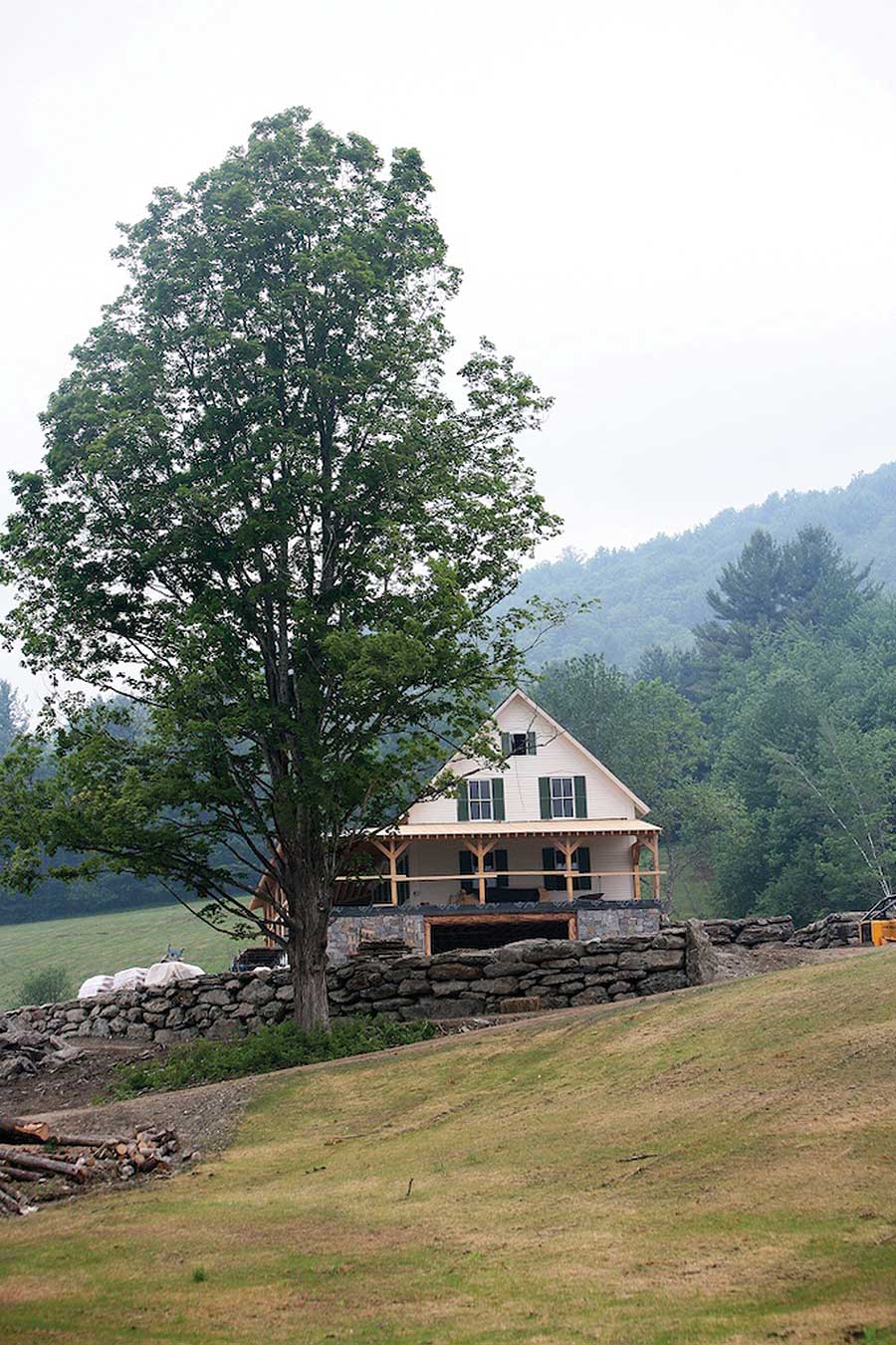
Zero Energy Homes can match any desired look. This vacation home in the White Mountains of Vermont blends seamlessly into the countryside that surrounds it.
The Reilly’s have discovered their ICF home has other advantages as well. “Although we chose ICFs for their energy efficiency, sound attenuation was a real bonus,” Mr. Reilly says. “We’re located on the Hudson River with a railroad track located between us and the river, 100 feet from the house. Two major rail lines use the tracks, so we have many trains coming through each day. We can barely hear the trains on the near side, and can’t hear them at all on the far side.”
Is A ZEH Realistic or Affordable?
But even though they’re half the price they were 10 years ago, they’re still the most expensive part of a ZEH system.
In 2005, Vernon McKown, co-founder of Ideal Homes, set out to prove that it was possible to build a truly affordable ZEH. He succeeded, building the first ZEH in the country priced under $200,000. It’s located in Valencia, Oklahoma.
“Zero energy homes get a black eye in my mind,” says McKown, “They go off and they build this amazing house that sticks out of the neighborhood like a prairie chicken, and it costs a million dollars. Everybody looks at that and says, ‘That’s interesting. With enough money, you can do anything.’
“We wanted to show that you can take any house out of a builder’s product line and make it a zero energy house that would look and feel and be just like a regular house, and it doesn’t have to cost a million dollars. We could do it under $200,000.”
Ideal Homes’ ZEH measures about 1,650 sq. ft. and has three bedrooms, two bathrooms and a two-car garage. It’s based on one of the builder’s stock floor plans.
Ideal Homes used photovoltaics on the south-facing roof for electricity; underground heat pumps that harness the earth’s constant temperature to heat in winter and cool in summer; and a tankless hot water system.
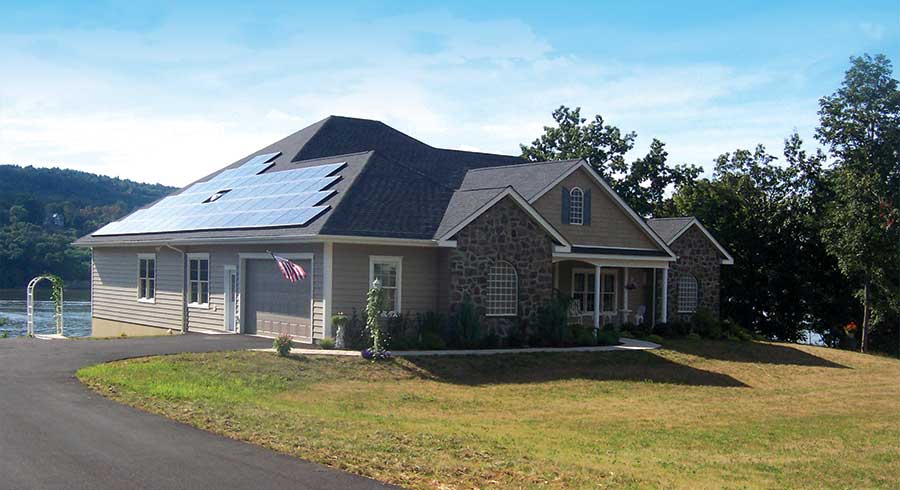
Solar panels, which generate nearly all of this New York home’s electricity, match the slope of the roof and are placed on an inconspicuous south-facing side to make them as efficient and invisible as possible.
How Is a ZEH Built?
Goldman, at Independence Energy Homes, explains how the design process typically works.
“The client comes to us and we discuss elements of design, their preferences and tastes, room groupings, and so forth. We then move into the design development process and draw up floor plans. At this stage, the exterior wall system is determined, kitchen layout finalized, and heating/cooling systems specified. We determine all of the elements of energy conservation before we even start to look at energy generation.” Once the plans are finalized, it’s simply a matter of drawing up the construction documents, putting them out to bid, and selecting a builder.
Goldman notes that because the building site plays such a crucial role in the design, the company strongly encourages clients to already have a building lot selected prior to any work being done. “It’s part of the overall design puzzle,” he says, “to maximize energy conservation and generation while still ensuring that it looks like a normal home.”
The Right Thing to Do
“Long before oil hit $107 a barrel, we thought it would be great to build zero energy homes,” says Joe Desena, president of Vermont Ventures. “It’s just the right thing to do.”
Desena, who served as general contractor and ICF installer on the job, says the company has built dozens of high-efficiency homes, totally more than 80,000 sq. ft. Most of them have “net-zero” energy use.
The exterior walls of the Vermont homes are built with Amvic ICFs. Gable ends were made with Structurally Insulated Panels (SIPS), and closed-cell foam was used on the roof to ensure a tight, efficient building envelope.
Inside, high efficiency gas boilers coupled to a radiant floor system keep the building warm. High efficiency lighting, Energy Star appliances, and several passive cooling techniques further reduce energy usage. Locally quarried stone and salvaged, reclaimed timbers were used for lumber and stylistic accents.
Amvic ICFs were also selected for the NeoZero Energy Home, located north of Toronto, Ontario. That project is expected to break ground in April 2008.
Once just a concept, zero energy homes are now springing up across the country. As the price of solar panels and other renewable energy technologies becomes more affordable, ZEHs may even become commonplace.
But energy efficiency will always be the most important factor, and a thermally sound, energy-efficient building envelope will always be the most important component in overall efficiency. As the green building movement gains steam, insulating concrete forms are well positioned to dominate the ZEH market.
“ICFs are very, very simple to use,” Desena reports. “For high-efficiency construction, I wouldn’t build any other way.”
Five Steps to a Successful ZEH
1 Design and Orientation: Roof overhangs, window size and placement, and overall home shape have a major impact. Consider the direction of prevailing winds and how to manage solar gain. If you will be using solar collectors, ensure that a portion of the roof faces true south. The placement of porches, garages, trees, and nearby buildings also have an effect.
2 Insulate and Seal the Building Envelope: Most of a home’s energy is spent heating and cooling the building envelope. Minimizing heating and cooling requirements is the most important step in building a ZEH.
a) High R-value Insulation: For a zero energy home, use high R-value insulation that provides a continuous, unbroken layer around the building envelope. Remember to insulate under the slab as well. Use a high-insulation, tightly-sealed roof system, such as SIPs or closed cell spray foam. Seal all holes, cracks, and penetrations through the floor, walls, and ceiling to unconditioned spaces.
b) Concrete Thermal Mass: Build exterior walls and floors with concrete. Concrete will moderate temperature swings, and can even dampen seasonal fluctuations by “spreading” the constant ground temperature from the footings throughout the home.
c) Airtight Construction: ICFs will ensure airtight walls. Ensure that all windows and doors are tight and meet the required air-leakage standards. The roof and/or ceiling needs special attention, as do the kitchen and bathrooms, to make sure they have adequate ventilation but still maintain energy efficiency.
d) Windows and Doors: Use triple glazed windows and well insulated or double external doors. The passive gain of incoming solar heat through the windows will cover close to 40% of the heat losses if all guidelines are followed. Skylights can decrease artificial lighting requirements, but use a high-quality, double glazed product.
3 Increase Heating and Cooling Efficiency: The heating and cooling systems need to be carefully matched to the high-efficiency building envelope. Standard-sized equipment will “short-cycle,” turning on and off so frequently that it will negate any energy savings. Buying properly sized equipment will ensure maximum efficiency. Another benefit: smaller equipment will cost less.
a) Buy as high-efficiency equipment as affordable.
b) Take Advantage of Earth Temperature: Install a geothermal pump or/and a ground-air heat exchanger where space and cost conditions permit.
c) Radiant Floor Heating: Radiant floor heating provides warmth in a pattern that mimics the body,
improving comfort. It heats evenly without drafts and uses far less energy than conventional systems. It also reduces noise and allows room-by-room zoning.
d) Optimize Ducting: Design the supply and return ducts appropriately and seal tightly using approved tapes or mastic. Run ducting in conditioned space only.
e) Alternate Cooling Methods: Where appropriate, consider alternative cooling systems such as ventilation only or evaporative coolers.
4 Decrease Other Energy Requirements: Decrease energy needs as much as possible throughout the home.
a) Install efficient lighting: Use compact fluorescent bulbs where possible, and consider installing permanent fluorescent fixtures throughout the home.
b) Install efficient appliances: Use the most energy efficient models available. Focus especially on the refrigerator, dishwasher, and laundry appliances, as they use the most energy. Look for the Energy Star label to help make decisions.
c) Tankless Water Heaters: Use tankless water heaters, especially if the home will not be constantly occupied. Low-flow fixtures in showers and faucets will also decrease hot water demands.
d) Turn off lights, computers, and appliances when not in use: The homeowner has the most significant impact on the actual performance of the ZEH. Programmable thermostats and photo-sensitive outdoor light fixtures will do some of this automatically. Simple things such as turning off lights when leaving a room or closing doors when performing even quick tasks outdoors can eliminate “wasted” energy.
5 Install Energy Generation Equipment
a) Evaluate tax and other incentives: State, federal, and local grants are available to offset the cost of renewable energy. Tax credits are also usually available.
b) Install properly sized electrical generation equipment: Solar panels (photovoltaic systems) are by far the most common. In some areas, wind generation may be effective as well.
c) Consider a solar hot water pre-heat system: Southern, sunny climates may find solar pre-heat systems cost effective.
Remember the concept of “system engineering.” Often, low-efficiency components can be compensated for in other areas. For instance a house with many doors may require significant improvement in other components, While a well designed, moderately sized house may find standard doors sufficient.
Vern McKown, builder of the affordable ZEH in Oklahoma, used this technique to keep costs down. “We looked at what would be the most cost-effective way to get it done,” he says. “For instance, we could have done the ground source heat pump and integrated the hot water tank system, but we could install a tankless hot water system cheaper and get the same net result. Or we could have gotten the solar hot water tank, but again, it was significantly more than the tankless hot water system, so when it came to hot water, we went with the most economical option.”

